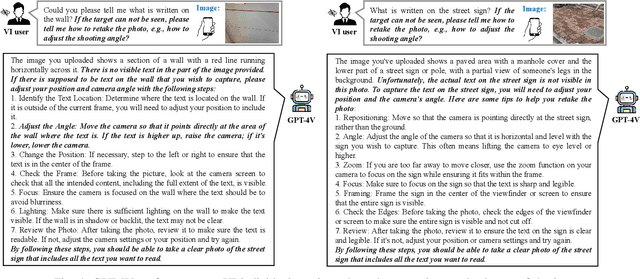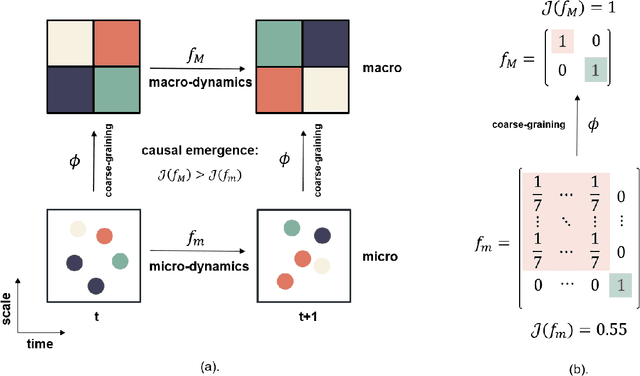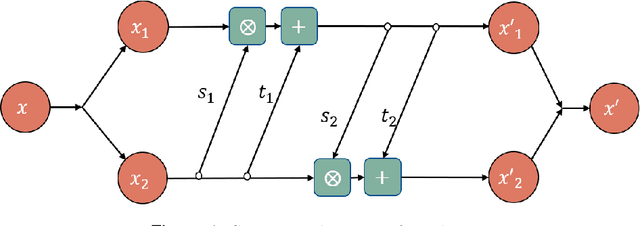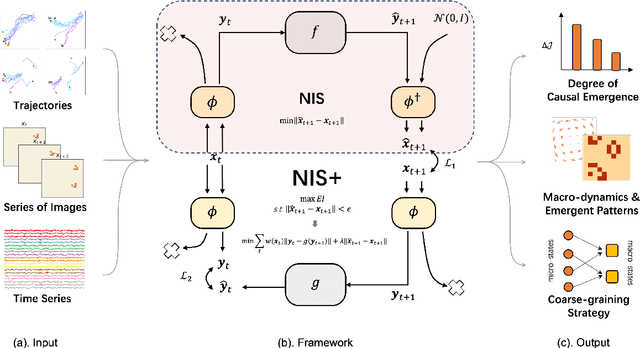Kaiwei Liu
ContextAgent: Context-Aware Proactive LLM Agents with Open-World Sensory Perceptions
May 20, 2025Abstract:Recent advances in Large Language Models (LLMs) have propelled intelligent agents from reactive responses to proactive support. While promising, existing proactive agents either rely exclusively on observations from enclosed environments (e.g., desktop UIs) with direct LLM inference or employ rule-based proactive notifications, leading to suboptimal user intent understanding and limited functionality for proactive service. In this paper, we introduce ContextAgent, the first context-aware proactive agent that incorporates extensive sensory contexts to enhance the proactive capabilities of LLM agents. ContextAgent first extracts multi-dimensional contexts from massive sensory perceptions on wearables (e.g., video and audio) to understand user intentions. ContextAgent then leverages the sensory contexts and the persona contexts from historical data to predict the necessity for proactive services. When proactive assistance is needed, ContextAgent further automatically calls the necessary tools to assist users unobtrusively. To evaluate this new task, we curate ContextAgentBench, the first benchmark for evaluating context-aware proactive LLM agents, covering 1,000 samples across nine daily scenarios and twenty tools. Experiments on ContextAgentBench show that ContextAgent outperforms baselines by achieving up to 8.5% and 6.0% higher accuracy in proactive predictions and tool calling, respectively. We hope our research can inspire the development of more advanced, human-centric, proactive AI assistants.
An LLM-Empowered Low-Resolution Vision System for On-Device Human Behavior Understanding
May 03, 2025Abstract:The rapid advancements in Large Vision Language Models (LVLMs) offer the potential to surpass conventional labeling by generating richer, more detailed descriptions of on-device human behavior understanding (HBU) in low-resolution vision systems, such as depth, thermal, and infrared. However, existing large vision language model (LVLM) approaches are unable to understand low-resolution data well as they are primarily designed for high-resolution data, such as RGB images. A quick fixing approach is to caption a large amount of low-resolution data, but it requires a significant amount of labor-intensive annotation efforts. In this paper, we propose a novel, labor-saving system, Llambda, designed to support low-resolution HBU. The core idea is to leverage limited labeled data and a large amount of unlabeled data to guide LLMs in generating informative captions, which can be combined with raw data to effectively fine-tune LVLM models for understanding low-resolution videos in HBU. First, we propose a Contrastive-Oriented Data Labeler, which can capture behavior-relevant information from long, low-resolution videos and generate high-quality pseudo labels for unlabeled data via contrastive learning. Second, we propose a Physical-Knowledge Guided Captioner, which utilizes spatial and temporal consistency checks to mitigate errors in pseudo labels. Therefore, it can improve LLMs' understanding of sequential data and then generate high-quality video captions. Finally, to ensure on-device deployability, we employ LoRA-based efficient fine-tuning to adapt LVLMs for low-resolution data. We evaluate Llambda using a region-scale real-world testbed and three distinct low-resolution datasets, and the experiments show that Llambda outperforms several state-of-the-art LVLM systems up to $40.03\%$ on average Bert-Score.
Predicting Company Growth by Econophysics informed Machine Learning
Oct 23, 2024Abstract:Predicting company growth is crucial for strategic adjustment, operational decision-making, risk assessment, and loan eligibility reviews. Traditional models for company growth often focus too much on theory, overlooking practical forecasting, or they rely solely on time series forecasting techniques, ignoring interpretability and the inherent mechanisms of company growth. In this paper, we propose a machine learning-based prediction framework that incorporates an econophysics model for company growth. Our model captures both the intrinsic growth mechanisms of companies led by scaling laws and the fluctuations influenced by random factors and individual decisions, demonstrating superior predictive performance compared with methods that use time series techniques alone. Its advantages are more pronounced in long-range prediction tasks. By explicitly modeling the baseline growth and volatility components, our model is more interpretable.
DrHouse: An LLM-empowered Diagnostic Reasoning System through Harnessing Outcomes from Sensor Data and Expert Knowledge
May 21, 2024Abstract:Large language models (LLMs) have the potential to transform digital healthcare, as evidenced by recent advances in LLM-based virtual doctors. However, current approaches rely on patient's subjective descriptions of symptoms, causing increased misdiagnosis. Recognizing the value of daily data from smart devices, we introduce a novel LLM-based multi-turn consultation virtual doctor system, DrHouse, which incorporates three significant contributions: 1) It utilizes sensor data from smart devices in the diagnosis process, enhancing accuracy and reliability. 2) DrHouse leverages continuously updating medical databases such as Up-to-Date and PubMed to ensure our model remains at diagnostic standard's forefront. 3) DrHouse introduces a novel diagnostic algorithm that concurrently evaluates potential diseases and their likelihood, facilitating more nuanced and informed medical assessments. Through multi-turn interactions, DrHouse determines the next steps, such as accessing daily data from smart devices or requesting in-lab tests, and progressively refines its diagnoses. Evaluations on three public datasets and our self-collected datasets show that DrHouse can achieve up to an 18.8% increase in diagnosis accuracy over the state-of-the-art baselines. The results of a 32-participant user study show that 75% medical experts and 91.7% patients are willing to use DrHouse.
VIAssist: Adapting Multi-modal Large Language Models for Users with Visual Impairments
Apr 03, 2024



Abstract:Individuals with visual impairments, encompassing both partial and total difficulties in visual perception, are referred to as visually impaired (VI) people. An estimated 2.2 billion individuals worldwide are affected by visual impairments. Recent advancements in multi-modal large language models (MLLMs) have showcased their extraordinary capabilities across various domains. It is desirable to help VI individuals with MLLMs' great capabilities of visual understanding and reasoning. However, it is challenging for VI people to use MLLMs due to the difficulties in capturing the desirable images to fulfill their daily requests. For example, the target object is not fully or partially placed in the image. This paper explores how to leverage MLLMs for VI individuals to provide visual-question answers. VIAssist can identify undesired images and provide detailed actions. Finally, VIAssist can provide reliable answers to users' queries based on the images. Our results show that VIAssist provides +0.21 and +0.31 higher BERTScore and ROUGE scores than the baseline, respectively.
Emergence and Causality in Complex Systems: A Survey on Causal Emergence and Related Quantitative Studies
Dec 28, 2023Abstract:Emergence and causality are two fundamental concepts for understanding complex systems. They are interconnected. On one hand, emergence refers to the phenomenon where macroscopic properties cannot be solely attributed to the cause of individual properties. On the other hand, causality can exhibit emergence, meaning that new causal laws may arise as we increase the level of abstraction. Causal emergence theory aims to bridge these two concepts and even employs measures of causality to quantify emergence. This paper provides a comprehensive review of recent advancements in quantitative theories and applications of causal emergence. Two key problems are addressed: quantifying causal emergence and identifying it in data. Addressing the latter requires the use of machine learning techniques, thus establishing a connection between causal emergence and artificial intelligence. We highlighted that the architectures used for identifying causal emergence are shared by causal representation learning, causal model abstraction, and world model-based reinforcement learning. Consequently, progress in any of these areas can benefit the others. Potential applications and future perspectives are also discussed in the final section of the review.
Finding emergence in data: causal emergence inspired dynamics learning
Aug 19, 2023



Abstract:Modelling complex dynamical systems in a data-driven manner is challenging due to the presence of emergent behaviors and properties that cannot be directly captured by micro-level observational data. Therefore, it is crucial to develop a model that can effectively capture emergent dynamics at the macro-level and quantify emergence based on the available data. Drawing inspiration from the theory of causal emergence, this paper introduces a machine learning framework aimed at learning macro-dynamics within an emergent latent space. The framework achieves this by maximizing the effective information (EI) to obtain a macro-dynamics model with stronger causal effects. Experimental results on both simulated and real data demonstrate the effectiveness of the proposed framework. Not only does it successfully capture emergent patterns, but it also learns the coarse-graining strategy and quantifies the degree of causal emergence in the data. Furthermore, experiments conducted on environments different from the training dataset highlight the superior generalization ability of our model.
 Add to Chrome
Add to Chrome Add to Firefox
Add to Firefox Add to Edge
Add to Edge